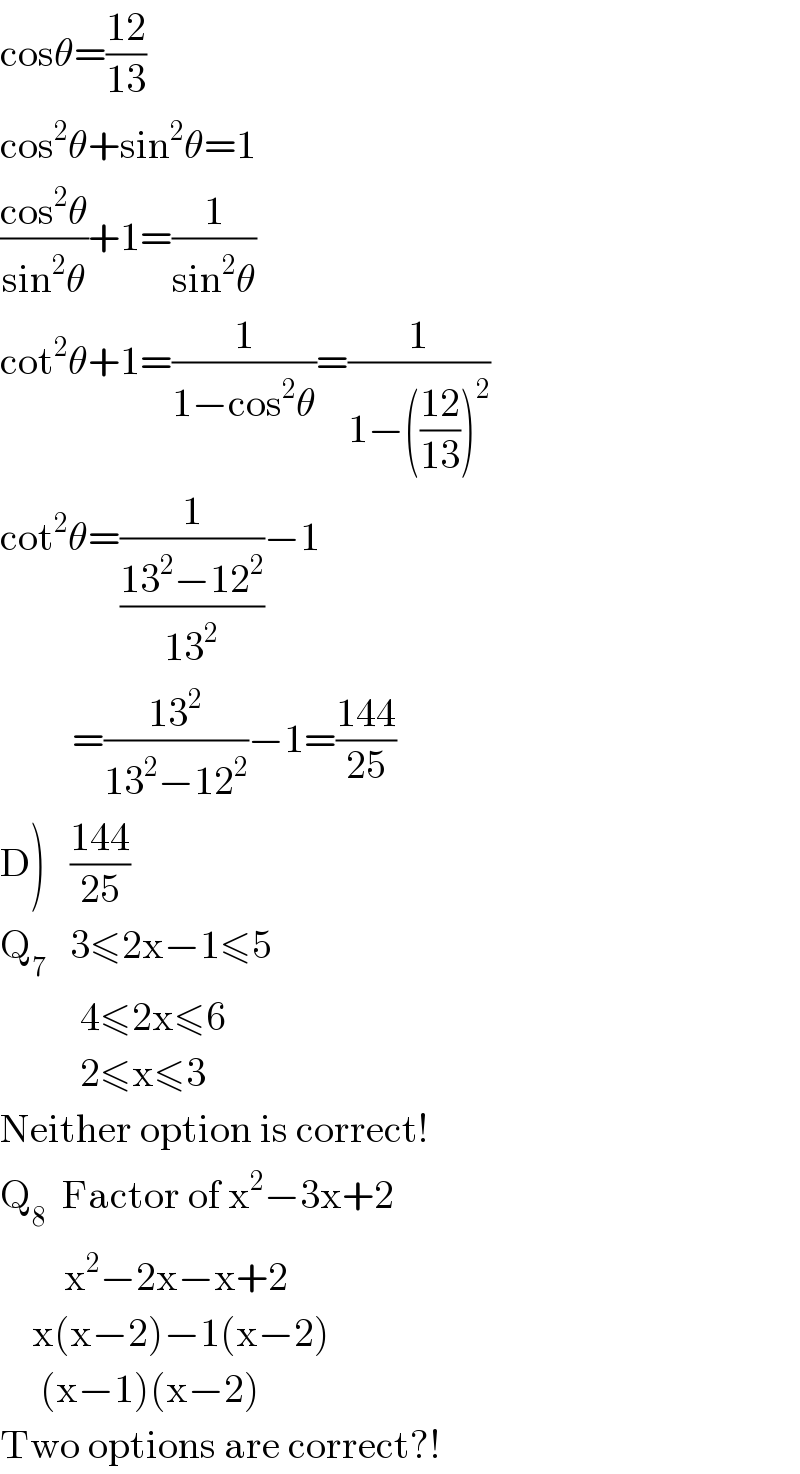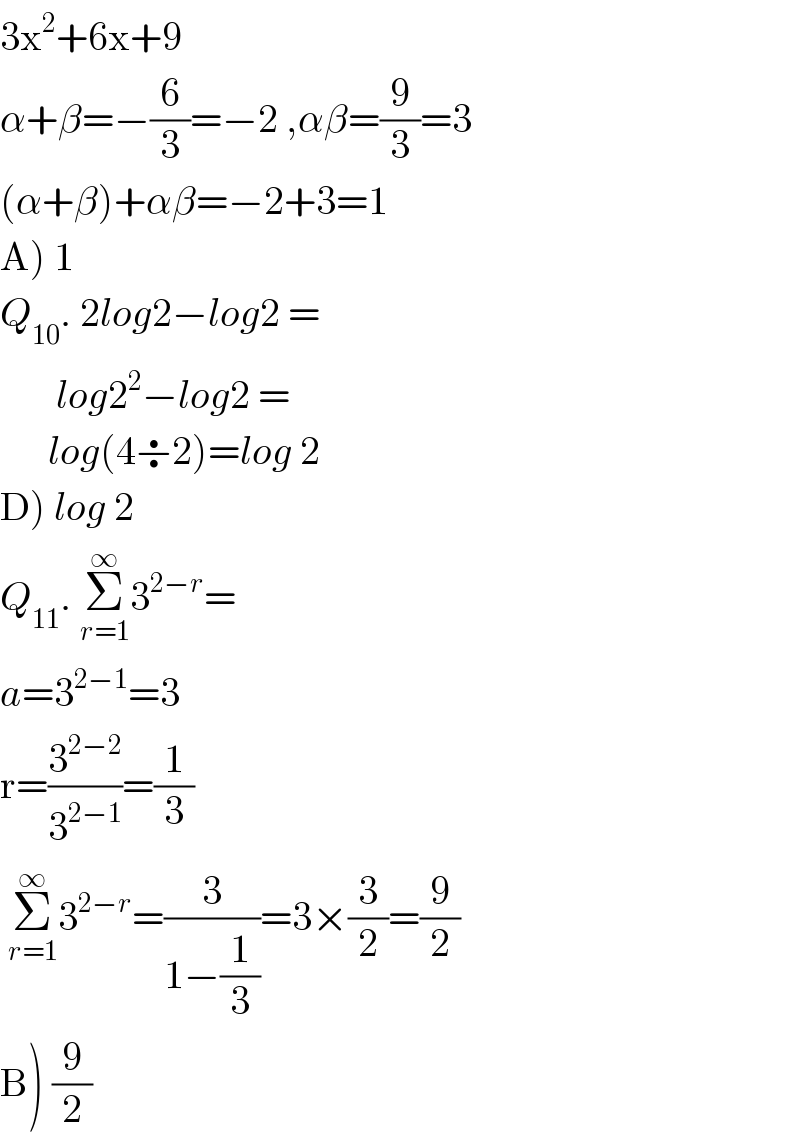
Question and Answers Forum
Question Number 35811 by Rio Mike last updated on 23/May/18
![Multiple Choice Questions Rio Mike. Q_1 . The value of 6 + 2 × 4 −15 ÷ 3 is; A) 3 B) 9 C) 4 D) 27 Q_2 . 80 as a product of its prime factor is. A) 2^3 × 5 B) 2 × 5^(3 ) C) 2^2 × 5^2 D) 2^4 × 5 Q_3 . The deteminant of (((6 4)),((3 2)) ) is A) 18 B) 0 C) 24 D) −24 Q_4 . the value of ((1/(16)))^(−(1/2)) is A) −(1/4) B) 4 C) −4 D) (1/2) Q_5 . if −8,m,n,19 are in AP then (m,n) is A) (1,10) B) (2,10) C) (3,13) D) (4,16)o Q_6 . if cos θ = ((12)/(13)) then cot^2 θ is; A) ((169)/(25)) B) ((25)/(169)) C)((169)/(144)) D) ((144)/(169)) Q_7 . the solution set of 3 ≤ 2x−1≤5 is; A) ]x≥−2,x≤(8/3)[ B) [x≥2,x≤−(8/3)[ C) ]x>−2,x≤(3/8)] D) [x≥−2,x≤(8/3)] Q_8 . Which is a factor of f(x)= x^2 −3x + 2 A) (x−1) B) (x−2) C) (x+1) D)(x+3) Q_(9 ) . The sum of the sum of roots and product of roots of the quadratic equation 3x^2 + 6x + 9=0 A) 1 B) −1 C) 32 D) 5 Q_(10) . 2log2−log2 = A) log 8 B) log 6 C) log 3 D) log 2. Q_(11) . Σ_(r=1) ^∞ 3^(2−r) = A) (9/4) B) (9/2) C) ((13)/3) D) (1/2) Q_(12) . The constand term in the binomial expansion of (x^2 + (1/x^2 ))^8 is A) 3^(rd) B) 4^(th) C) 5^(th) D) 6^(th) Q_(13) . cos(180−x) = A) −sinx B) sin x C) cos x D) −cos x Q_(14) . The value of p for which (2,1) , (6,3), and (4,p) are collinear is ; A) 2 B) 1 C)−1 D) −2 Q_(15) . ∫_1 ^2 x^3 dx = A) −sin 7x B) sin 7x C) −7sin7x D) 7sin7x Q_(16) . Given that g : → px −5, the value of p for which g^(−1) (3)=4 is A) (1/2) B) −(1/2) C) −2 D) 2 Q_(17) . The value of θ in the range 0°≤θ≤90° for which sinθ = cos θ is A) 90° B) 60° C) 30° D) 45° Questions](Q35811.png)
Commented by Rasheed.Sindhi last updated on 24/May/18

Commented by Joel579 last updated on 24/May/18

Commented by Rasheed.Sindhi last updated on 24/May/18

Commented by Rio Mike last updated on 24/May/18

Commented by Rasheed.Sindhi last updated on 25/May/18

Commented by rahul 19 last updated on 26/May/18

Answered by Rasheed.Sindhi last updated on 25/May/18

Answered by Rasheed.Sindhi last updated on 25/May/18

Answered by Rasheed.Sindhi last updated on 26/May/18

